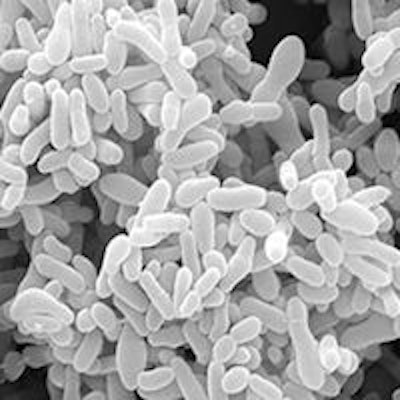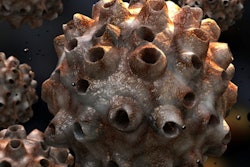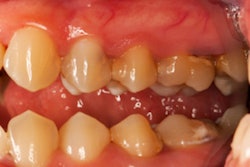
A bacterium linked to gum disease may promote the growth of a pathogen that causes bacterial vaginosis (BV). The bacterium is likely introduced into the vagina during oral sex, according to a study published on August 13 in PLOS Biology.
The periodontitis-causing Fusobacterium nucleatum supports the robust growth of Gardnerella vaginalis, the bacterium that causes bacterial vaginosis. This debunks the belief that a lack of healthy bacteria is solely responsible for creating an environment that allows pathogens to take over the vagina and create an imbalance, and it also bolsters previous evidence linking oral sex with bacterial vaginosis, according to the authors.
This is the "first direct evidence that mutual benefit, made possible in part through metabolite cross-feeding, can promote pathogen colonization of the vagina and encourage features of vaginal dysbiosis," wrote the group, led by Amanda Lewis, PhD, of the department of molecular microbiology at Washington University School of Medicine in St. Louis.
Affecting one-third of women
 G. vaginalis. Image courtesy of the National Institute of Standards and Technology (NIST) and K.K. Jefferson/Virginia Commonwealth University.
G. vaginalis. Image courtesy of the National Institute of Standards and Technology (NIST) and K.K. Jefferson/Virginia Commonwealth University.Bacterial vaginosis occurs when the normal balance of bacteria in the vagina is disrupted, and it affects about 29% of women in the U.S., mostly those between the ages of 15 and 44. The condition typically occurs in sexually active women, and taking on a new sexual partner, having multiple partners, or douching upends the balance of good and bad bacteria in the vagina, increasing the risk of getting bacterial vaginosis. Having bacterial vaginosis makes women more susceptible to sexually transmitted infections, and pregnant women with the condition can experience amniotic fluid infections and preterm labor due to F. nucleatum, which is widespread in the human mouth and overgrows in dental plaque. Until now, the mechanisms underlying these processes have been poorly understood.
Lewis and colleagues analyzed interactions between bacterial communities and the ability of different bacteria to access required nutrients in an already-occupied microbiome by conducting experiments in mice and vaginal samples from humans. The mouse vaginal communities were inoculated with F. nucleatum, and the researchers discovered increased biochemical activities, such as increased sialidase activity, that have already been associated with bacterial vaginosis. Then, F. nucleatum was inoculated into human vaginal microbial communities cultivated from vaginal swabs from 21 women, according to the authors.
Analysis in humans
The vaginal samples incubated with the bacterium showed increased levels of multiple biomarkers of bacterial vaginosis, compared with those that were not inoculated with F. nucleatum. This suggests that the gum disease-causing bacterium engages in a mutually beneficial relationship with other bacteria, encouraging pathogens to occupy the vagina and promoting features of vaginal dysbiosis. Furthermore, F. nucleatum promoted the growth of G. vaginalis, a sialidase producer that is a key player in bacterial vaginosis, the group noted.
Despite gaining a better understanding of the mechanical processes associated with this infection, there was a lack of precise experimental control of sialidase in bacterial communities due to the diverse possible sources of bacterial sialidase, the compositional and physiological complexity of vaginas, and insufficient tools that can genetically manipulate many fastidious vaginal organisms that don't need oxygen to grow, Lewis and colleagues wrote.
Time to prevention and treatment
Though this study sheds more light on why women with bacterial vaginosis are colonized with pathogens that result in adverse health outcomes, more research is needed to determine how to prevent and treat this condition in women.
"These findings may help explain why women with BV are more likely to be vaginally colonized with potential pathogens linked with intrauterine infection and adverse health outcomes," they wrote.




















